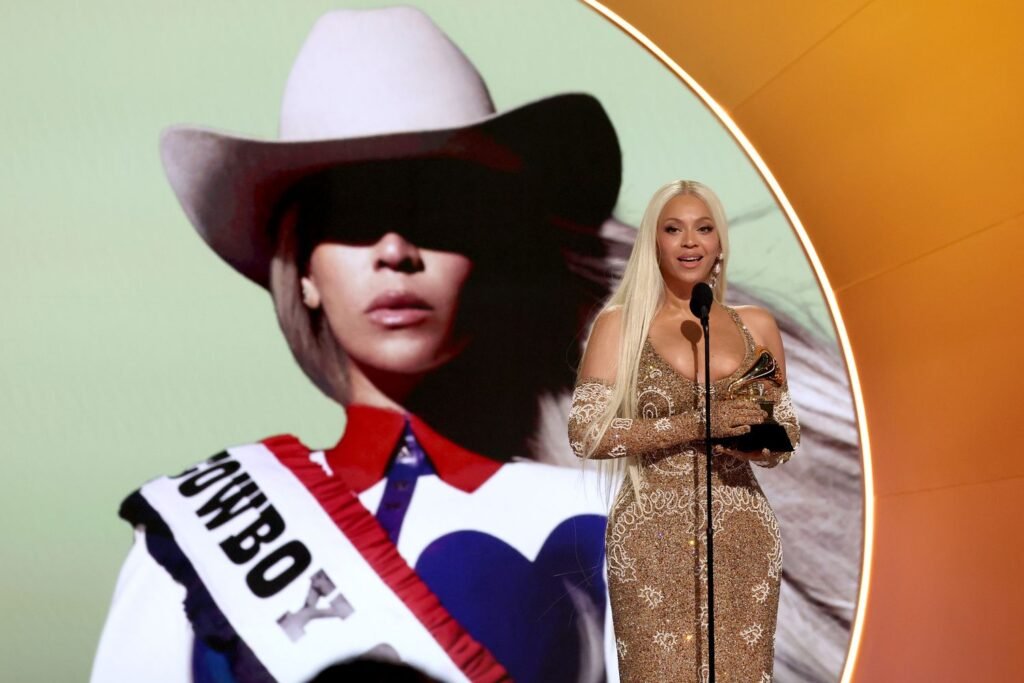:max_bytes(150000):strip_icc():format(jpeg)/GettyImages-2197323699-329c548fe656466485d67aa70e9689cd.jpg)
When you’ve paid hundreds of dollars or more to see Beyoncé’s Cowboy Carter tour, you’re expecting far more than a concert. Backing Queen Bey isn’t just a crew of musicians and dancers but an $11 million-per-night operation employing a small town of technicians, mechanical bulls, flying cars, and enough pyrotechnics to rival a major sporting event.
So while the ticket costs are nothing to be crazy in love about—the average price is just under $300 before resale markups—understanding where your money goes might make those prices easier to swallow.
Key Takeaways
- Beyoncé’s tour has the production scale of a small town, employing hundreds of crew members backing elaborate staging that costs millions per show.
- By focusing on fewer, bigger “destination events” rather than traditional touring, major artists like Beyoncé can command higher ticket prices while cutting costs.
Formation of a Touring Empire
Each time Beyoncé steps on stage, about $11.1 million worth of entertainment is about to unfold. Her Cowboy Carter performances pack tens of thousands into each show, with many traveling from across the country to see her.
The main stage for the Cowboy Carter tour features a giant rectangular screen that creates the optical illusion of a five-pointed star, connected by LED-equipped ramps to secondary platforms. Add mechanical bulls, multiple levitating platforms, robotic arms, pyrotechnics, and a red Cadillac Eldorado, and you’re looking at equipment that requires teams of engineers to pull off safely.
Fast Fact
Beyoncé’s $579-million-earning Renaissance World Tour employed 304 crew members and required three identical stages—one for day-of performances while two others traveled to the next cities.
“Who Run the World? Girls!” (With a Production Team)
The most expensive parts of the tour are for what’s behind the scenes. While specific truck counts for Cowboy Carter aren’t public, industry comparisons suggest a similar scale—Bad Bunny’s recent stadium tour needed 36 trucks carrying 100 tons of equipment, and Taylor Swift’s Eras Tour required about 90 trucks and had transportation costs of more than $30 million.
Then there’s the human element. Custom wardrobes from fashion houses like Loewe, Diesel, and Roberto Cavalli don’t come cheap. The show’s 2-hour and 45-minute runtime requires costume coordinators, backup dancers, musicians, lighting technicians, sound engineers, security teams, and specialists for everything from pyrotechnics to operating the mechanical bull.
A Tour’s Bills, Bills, Bills
Beyoncé’s shift toward fewer, larger-scale “destination events” rather than traditional touring reflects the industry’s evolution. Her 31-show Cowboy Carter tour is concentrated into just eight major markets over 2.5 months, compared with the more conventional 56-show Renaissance tour. This strategy allows her to invest more heavily in production while reducing the costs of moving all her people from city to city like an invading army.
Industry projections suggest the complete Cowboy Carter tour could approach $300 million in total grosses. But that’s revenue, not profit. After venue costs, crew salaries, equipment rental, transportation, insurance, management fees, and marketing expenses, the actual take-home is substantially less.
The Bottom Line
If you’re lucky enough to catch Queen Bey floating above the crowd, you’re witnessing the culmination of years of planning, millions invested, and the coordinated effort of a small army. Beyoncé surely knows her value, and flawless entertainment doesn’t come cheap.

